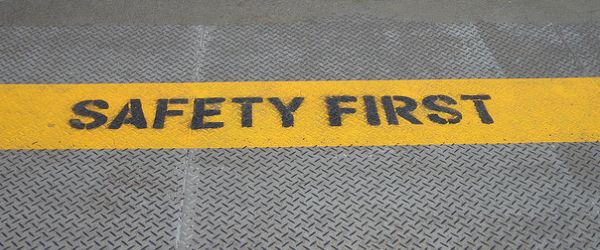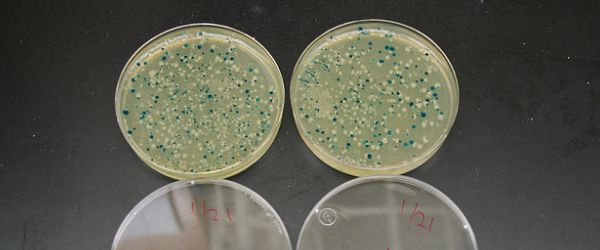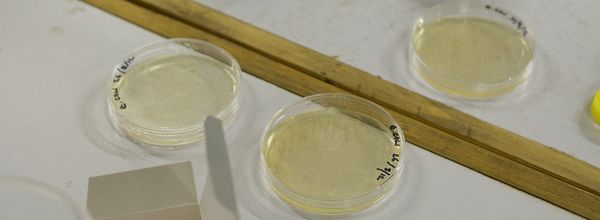Sometimes a clever little trick for cloning comes along that makes you just give an appreciatory “ahhh.”
For me, it was TA cloning. TA cloning is not a new technique (I am showing my advanced laboratory age here), but when I discovered it, the simple elegance of the technique made me pause and wonder about the clever scientists that figured it out (Holton and Graham; Marchuk et. al.; Mead et. al.).
What is TA cloning?
TA cloning was first described in 1991 and is a subcloning technique that efficiently clones PCR-amplified products into a target vector without the use of restriction enzymes.
TA cloning takes advantage of a unique property of Taq DNA polymerase and other similar polymerases that have a terminal transferase activity but lack 5’-3’ proofreading activity. During amplification, Taq adds a single 3’ dA nucleotide to the end of each PCR product. The resulting PCR product can be easily ligated into a vector with complementary T residues on each strand, appropriately named “T vectors”.
Enjoying this article? Get hard-won lab wisdom like this delivered to your inbox 3x a week.

Join over 65,000 fellow researchers saving time, reducing stress, and seeing their experiments succeed. Unsubscribe anytime.
Next issue goes out tomorrow; don’t miss it.
TA cloning is highly efficient (a word us molecular biologists like to hear when talking about cloning) with a routine cloning efficiency between 70- 90%.
How do I get T vectors?
T vectors are plasmids that have been engineered to accept DNA inserts containing A overhangs, and there are a couple of different ways to prepare them. In the traditional method, the plasmid is digested with an enzyme that leaves a blunt end and then incubated with terminal transferase and dideoxythymidine triphosphate (ddTTP).
Another method uses good ole’ magical Taq. After digestion of the plasmid with a restriction enzyme that creates a blunt end, the plasmid is incubated with Taq and deoxythymidine triphosphate (dTTP).
Both of these “tailing” processes lead to the addition of a single 3’ T residue on each DNA strand. After a little bit of clean up, the vector is ready to be used. You can make the vector yourself the old-fashioned way (see here or here for protocols), or you can buy TA cloning kits from multiple manufacturers.
TA cloning magic applied to other DNA fragments
Although TA cloning was first designed for subcloning PCR products amplified by Taq polymerase, with a few extra steps, TA cloning can be used to subclone virtually any DNA fragment. TA cloning can be used universally by simply incubating almost any DNA fragment with Taq polymerase in the presence of all four dNTPs (Zhou et. al.). Taq will fill in missing residues and add 3’-A overhangs to any double stranded DNA molecule.
If the DNA fragment contains protruding 3’-ends, then you have to add an extra step. Before incubating with Taq, incubate the fragment first with T4 DNA polymerase to create blunt ends and engineer an acceptable template for Taq.
As you can see, TA cloning is simply Taq magic in a tube that allows efficient cloning of PCR products and more. Think it can’t get any better than this? It can! Stay tuned for my next article on TOPO TA cloning.
References
Holton, T. A., and Graham, M. W. 1991. A simple and efficient method for direct cloning of PCR products using ddT-tailed vectors. Nucleic Acids Res. 19: 1156.
Marchuk, D., Drumm, M., Saulino, A. and Collins, F.S. 1991. Construction of T- vectors, a rapid and general system for direct cloning of unmodified PCR products. Nucleic Acids Res. 19: 1154.
Mead, D.A., Pey, N.K., Herrnstadt, C., Marcil, R.A. and Smith, L.M. 1991. A universal method for the direct cloning of PCR amplified nucleic acid. BioTechnology.9: 657-663
Zhou, M.Y., Clark, S.E. and Gomez-Sanchez, C.E. 1995. Universal cloning method by TA strategy. BioTechniques. 19:34-35.
You made it to the end—nice work! If you’re the kind of scientist who likes figuring things out without wasting half a day on trial and error, you’ll love our newsletter. Get 3 quick reads a week, packed with hard-won lab wisdom. Join FREE here.








